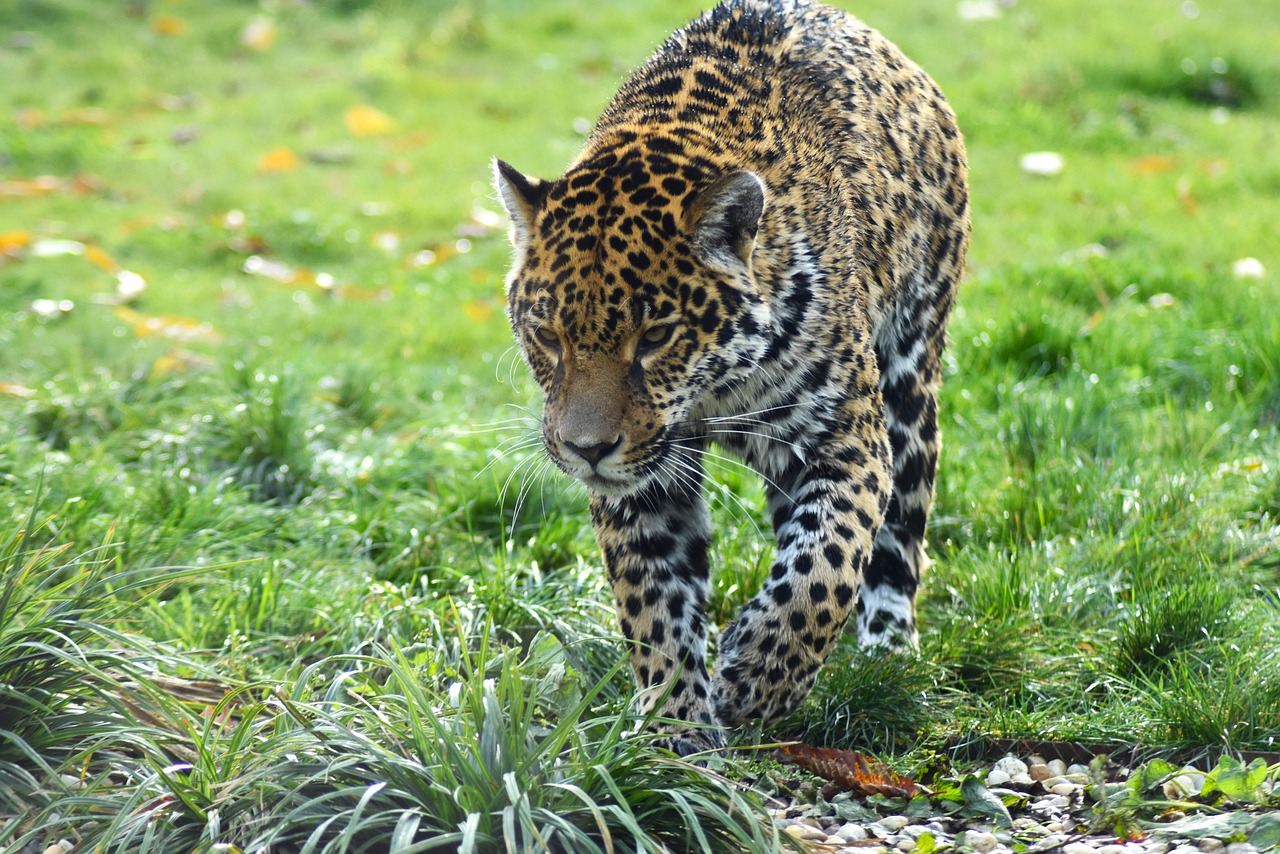Jaguars in Mexico: A Deep Dive into Their Homes
Habitat Overview
Jaguars (Panthera onca), the largest feline species in the Americas, are iconic animals found in various patches of forest and grassland across Mexico. Their habitats range from tropical rainforests to arid scrublands. Notably, the most significant concentrations of jaguars in Mexico reside in the southern portion, particularly in the Selva Maya, a vast expanse of jungle that spans parts of Mexico, Belize, and Guatemala.
Key Habitats in Mexico
-
Selva Maya:
The Selva Maya is the largest rainforest in Mexico, located in the Yucatan Peninsula. It is characterized by its high biodiversity, thick vegetation, and abundant water sources. The area’s dense canopy provides excellent cover for jaguars, as they primarily hunt at night. Key prey include peccaries, deer, and a variety of small mammals. -
Chiapas:
The Lacandon Jungle in Chiapas is another critical habitat for jaguars. This region features rich biodiversity, marked by numerous rivers and lagoons. Its lush environment supports a viable population of jaguars, though habitat loss due to agriculture and deforestation poses threats. -
Sierra Madre Occidental:
The rugged mountain ranges provide a unique blend of habitats, including pine-oak forests and temperate rainforests, suitable for jaguar populations. The area’s elevation and varied climates contribute to the diversity of wildlife, aiding in the jaguar’s hunting opportunities. - Coastal Mangroves:
Coastal areas such as the Sian Ka’an Biosphere Reserve offer jaguars a different habitat blended with mangroves and wetlands. The abundance of fish, birds, and small mammals, along with the intricate water channels, provides a rich hunting ground for these big cats.
Ecological Importance
Jaguars play a crucial role in maintaining the health of their ecosystems. As apex predators, they help control the population of prey species, ensuring a balanced ecosystem. Their foraging behavior influences the structure of plant communities, which benefits many other species within the habitat.
Threats to Jaguar Habitats
-
Deforestation:
Logging and agricultural expansion have profoundly impacted jaguar habitats. The Yucatan Peninsula, particularly, has faced significant fragmentation, leading to isolated jaguar populations and reduced genetic diversity. -
Human-Wildlife Conflict:
As human populations encroach on jaguar territories, conflicts arise. Farmers often view jaguars as threats to livestock, leading to intentional killings or retaliatory measures that further decrease their numbers. - Climate Change:
Changing weather patterns result in alterations to the habitats that jaguars depend on. Increased frequency of droughts and extreme rainfall can disrupt their prey base and modify vegetation composition, making it harder for these apex predators to thrive.
Conservation Efforts
-
Protected Areas:
Establishing protected areas like the Selva Maya and the Lacandon Jungle is essential for jaguar conservation efforts. These regions offer safe habitats and corridors that facilitate gene flow between isolated populations. -
Community Involvement:
Engaging local communities is critical in conservation strategies. Programs that promote sustainable practices, ecotourism, and education can lead to increased local support for jaguar preservation. Communities that benefit from conservation initiatives are more likely to protect jaguars and their habitats. -
Wildlife Corridors:
Developing wildlife corridors is essential for connecting fragmented habitats. These corridors allow jaguars to travel freely between different areas, increasing genetic diversity and access to prey. - Research and Monitoring:
Continuous research is vital for understanding jaguar populations and their habitats. Monitoring programs using camera traps and GPS collars help track movements, distribution, and the overall health of populations.
Cultural Significance
Jaguars hold a prominent place in Mexican culture, symbolism, and myth. They are regarded as powerful protectors and sacred animals in many indigenous cultures. The ancient Maya viewed jaguars as gods, linking them to the underworld and the earth’s fertility. This cultural significance emphasizes the need to protect their natural habitats, as they represent not only a critical ecological species but also an integral part of Mexico’s cultural heritage.
Conclusion
Efforts to protect jaguars in Mexico focus on their unique habitats and cultural importance. Through a combination of conservation strategies, community involvement, and global awareness, it is possible to ensure that these majestic animals continue to roam the landscapes of Mexico. The future of jaguars depends significantly on collective actions that prioritize their ecological and cultural significance, allowing them to thrive for generations to come.







